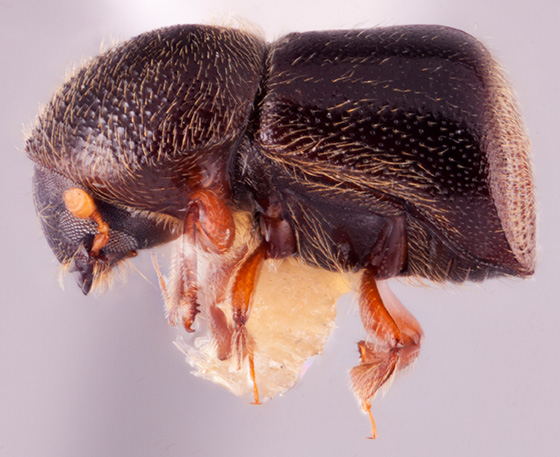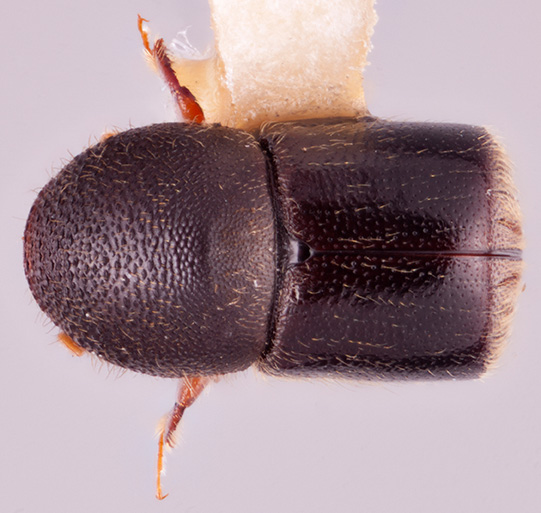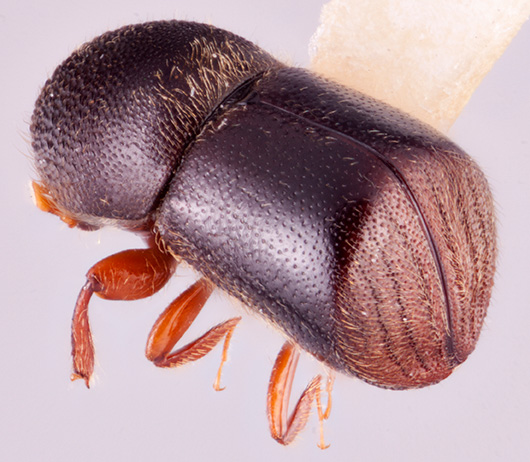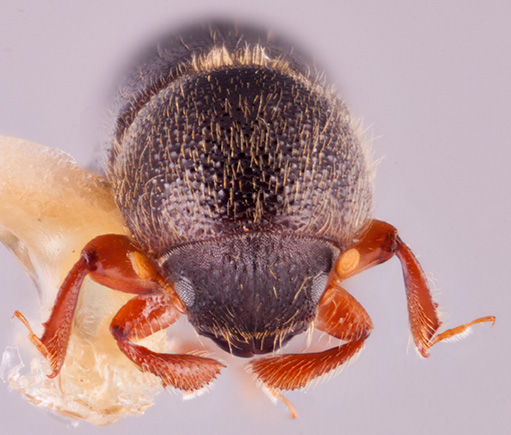Xylosandrus brevis
|
Xylosandrus brevis lateral; R.K. Osborn |
|
Xylosandrus brevis dorsal; R.K. Osborn |
|
Xylosandrus brevis declivity; R.K. Osborn |
|
Xylosandrus brevis frontal; R.K. Osborn |
Taxonomic history
Xyleborus brevis Eichhoff, 1877: 121.
Xylosandrus brevis (Eichhoff): Browne, 1965: 204.
Synonyms
Xyleborus cucullatus Blandford, 1894b: 121. Murayama, 1954: 176.
Xyleborus montanus Niisima, 1910: 13. Smith et al., 2018b: 399.
Diagnosis
2.75−2.9 mm long (mean = 2.87 mm; n = 5); 2.04−2.07 times as long as wide. This species can be distinguished by its moderate size; elytralelytral:
'pertaining to the elytra
discdisc:
the flat central upper surface of any body part (e.g. pronotum and elytra) flat, longer than declivitydeclivity:
flat, longer than declivitydeclivity:
downward slope of either the pronotum or elytra
 ; declivitaldeclivital:
; declivitaldeclivital:
pertaining to the elytral declivity
face steep, abruptly separated from discdisc:
the flat central upper surface of any body part (e.g. pronotum and elytra) ; elytraelytron:
; elytraelytron:
'
the two sclerotized forewings of beetles that protect and cover the flight wings
appearing obliquely truncateobliquely truncate:
'nearly truncate but rounded not flat in lateral view
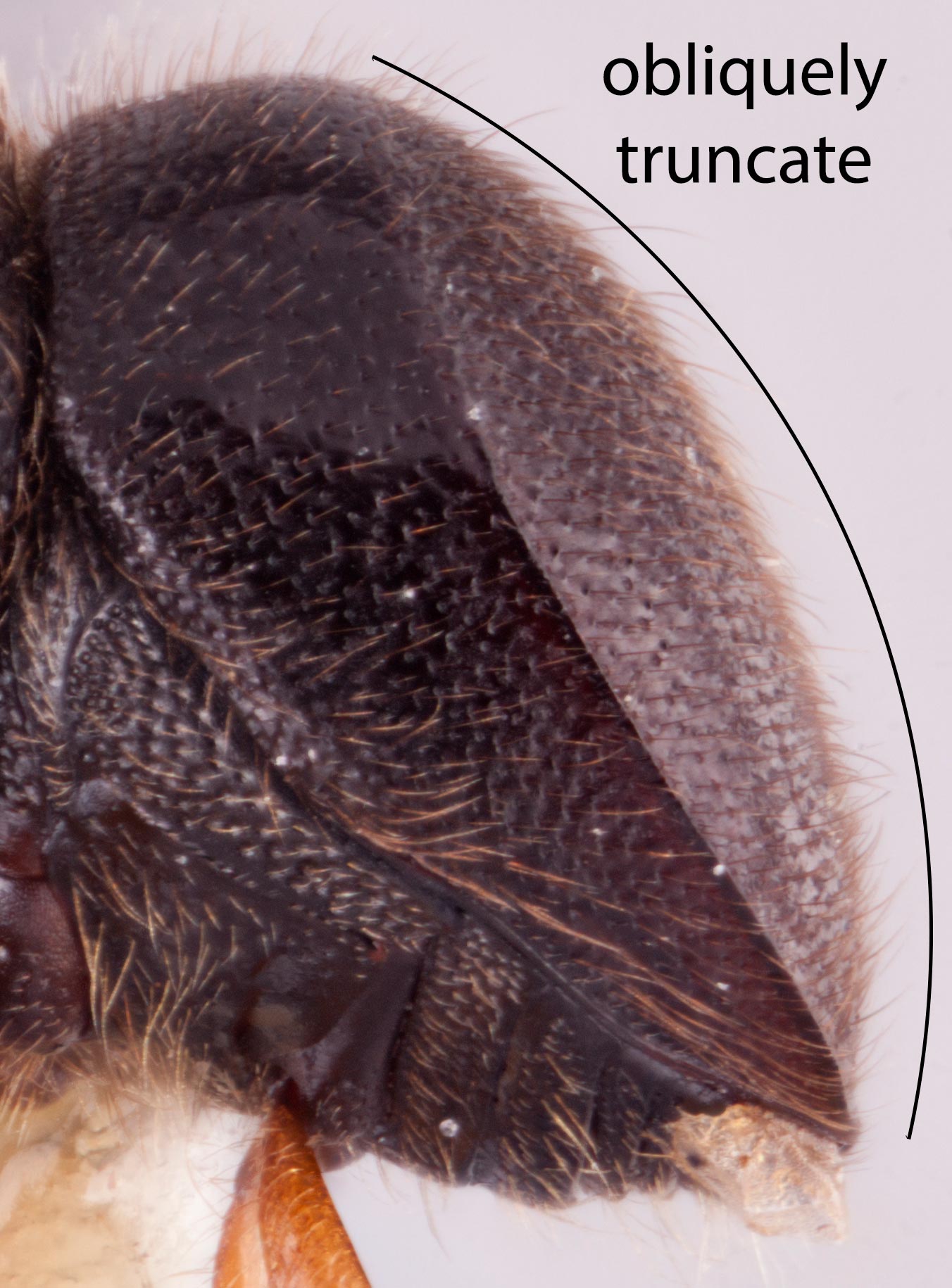 ; posterolateralposterolateral:
; posterolateralposterolateral:
'relating to end of the side part/portion
 margins of elytraelytron:
margins of elytraelytron:
'
the two sclerotized forewings of beetles that protect and cover the flight wings
carinate to interstriaeinterstria:
'longitudinal spaces along the elytra between the striae, which is not as<br />
impressed and bear smaller punctures.
 7; declivitaldeclivital:
7; declivitaldeclivital:
pertaining to the elytral declivity
face with four apparent granulategranulate:
'pertaining to a coarse, grainy surface texture'
 striae (striae 5 short, converging with striaestria:
striae (striae 5 short, converging with striaestria:
punctures in rows, which may or may not be impressed to make grooves 4 forming a loop); declivitaldeclivital:
4 forming a loop); declivitaldeclivital:
pertaining to the elytral declivity
face convexconvex:
appearing rounded ; declivitaldeclivital:
; declivitaldeclivital:
pertaining to the elytral declivity
striae and interstriaeinterstria:
'longitudinal spaces along the elytra between the striae, which is not as<br />
impressed and bear smaller punctures.
 setose, setaeseta:
setose, setaeseta:
small hair-like or scale-like structure
recumbentrecumbent:
'pertaining to setae that are flat against the cuticle
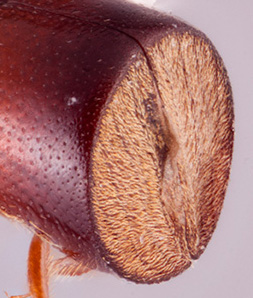 hairs and equal to the width of an interstriainterstria:
hairs and equal to the width of an interstriainterstria:
'longitudinal spaces along the elytra between the striae, which is not as<br />
impressed and bear smaller punctures.
 ; declivitaldeclivital:
; declivitaldeclivital:
pertaining to the elytral declivity
interstriae granulategranulate:
'pertaining to a coarse, grainy surface texture'
 , granulesgranule:
, granulesgranule:
'a small rounded protuberance, like grains of sand
 multiseriate, confusedconfused:
multiseriate, confusedconfused:
of markings, having indefinite outlines or running together as lines or spots without definite pattern; usually referring to punctures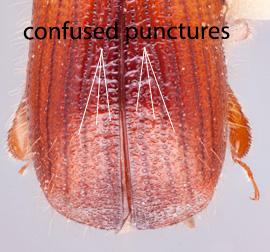 with erecterect:
with erecterect:
'pertaining to setae that have their apices directed away from the body and appear straight
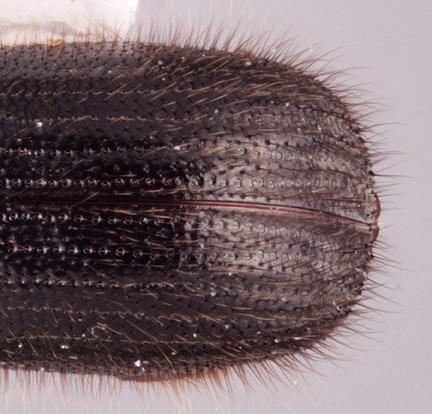 hair-like setaeseta:
hair-like setaeseta:
small hair-like or scale-like structure
longer than the width of two interstriae; strial granulesgranule:
'a small rounded protuberance, like grains of sand
 small, approximately the same size as those of interstriae; pronotumpronotum:
small, approximately the same size as those of interstriae; pronotumpronotum:
'the dorsal surface of the thorax
longer than wide, from dorsaldorsal:
'of or relating to the upper surface; opposite of ventral
 view conical frontally (type 6) and laterallateral:
view conical frontally (type 6) and laterallateral:
'pertaining to the side
 view taller (type 2), summitsummit:
view taller (type 2), summitsummit:
highest point, used for pronotum and elytra, denotes the peak between pronotal frontal slope and disc, and between elytral disc and declivity at basalbase:
at basalbase:
point or edge closest to the body; opposite of apex quarter, basalbase:
quarter, basalbase:
point or edge closest to the body; opposite of apex quarter shagreenedshagreened:
quarter shagreenedshagreened:
covered with a closely-set roughness, like shark skin'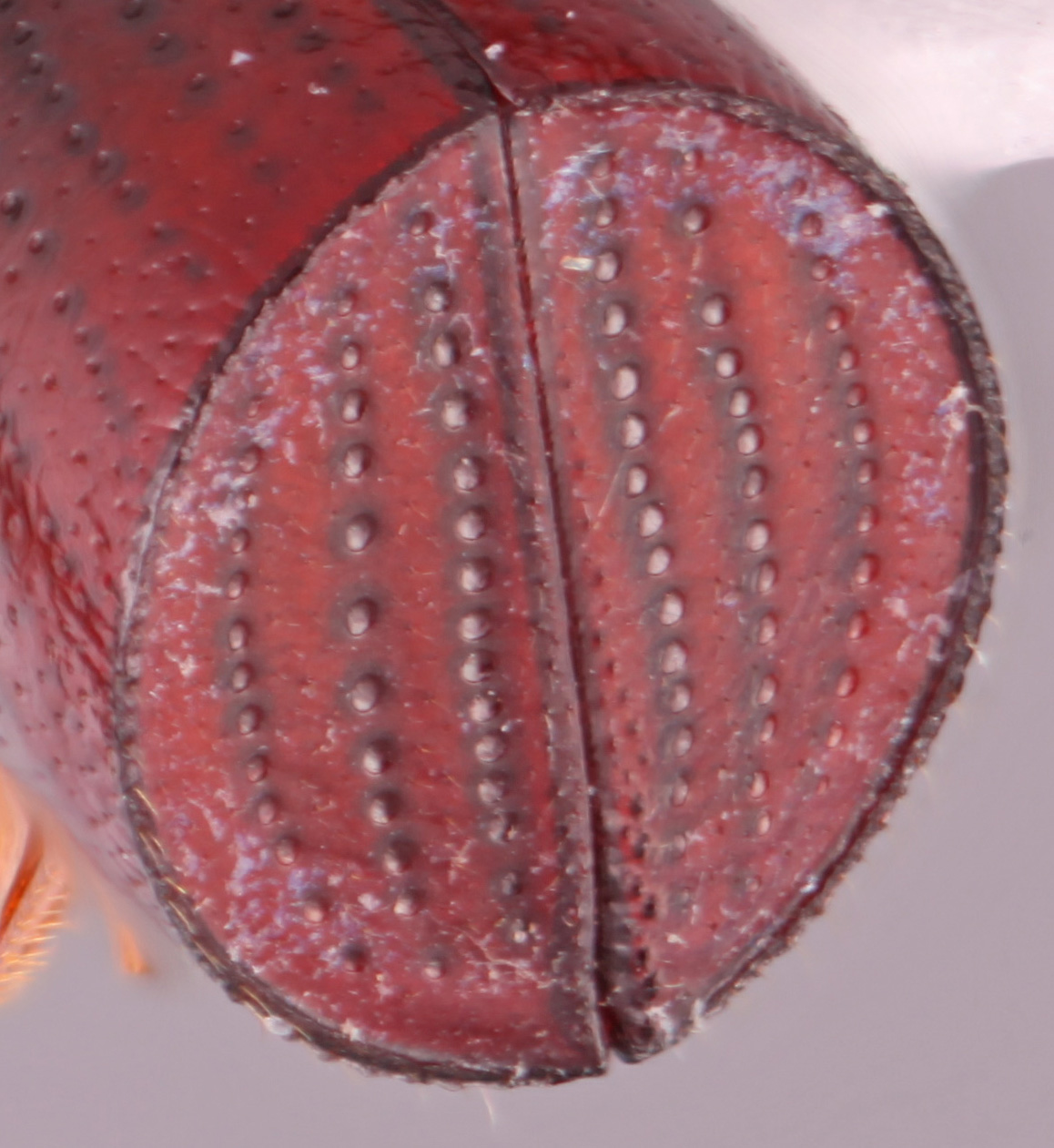 , dull, densely punctatepunctate:
, dull, densely punctatepunctate:
'set with fine impressed points, appearing as pin pricks
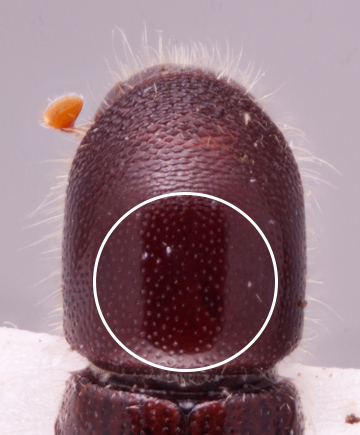 ; and broad, dense mycangial tuftmycangial tuft:
; and broad, dense mycangial tuftmycangial tuft:
'tuft of setae that denotes the mycangia exterior opening
 on the pronotalpronotal:
on the pronotalpronotal:
'pertaining to the pronotum
basebase:
point or edge closest to the body; opposite of apex .
.
May be confused with
Xylosandrus jaintianus, X. subsimiliformis, and X. subsimilis
Distribution
China (Xizang, Yunnan), Japan, South Korea, Nepal, Taiwan, Thailand
Host plants
polyphagous (Dole and Cognato 2010Dole and Cognato 2010:
Dole SA, Cognato AI, 2010. Revision of Xylosandrus Reitter (Curculionidae: Scolytinae). Proceedings of the California of Science 61: 451-545.)
DNA data
Sequences available for COI.
COI: MN620066

